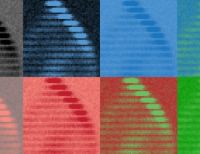Marianne Schmid Daners spent 15 years caring for patients as a registered nurse – today, she works as a researcher investigating new ways to improve medical devices. She began her career at Kantonsspital Schaffhausen on the hospital’s surgical ward before switching to the intensive care unit a few years later. After taking on various other roles in both hospital and home-care settings, she realised the time had come for a change. She decided to return to education to take her university entrance exams, and her interest in technology and mathematics ultimately led her to ETH Zurich to complete a mechanical engineering degree with a focus on biomedical engineering. “I’ve always been fascinated by the interaction between humans and technology,” she says. “And biomedical technology is the ideal field in which to combine my experience in nursing and mechanical engineering.”
Today, Schmid Daners leads the Biomedical Applications research group as a Senior Scientist under ETH professor Melanie Zeilinger. A key focus of her research is hydrocephalus, a condition in which the circulation of cerebrospinal fluid in the brain is impaired. The excess fluid can cause the ventricles to widen, putting harmful pressure on the brain’s tissues and leading to symptoms such as headaches, cognitive impairment and gait disorders. The most common form of therapy is the use of shunts to drain the accumulated fluid out of the brain into the abdominal area. Schmid Daners aims to develop intelligent shunt systems with an adaptive mechanism that can meet the specific needs of individual hydrocephalus patients.
So where does Schmid Daners see her role in applying these technologies? “My expertise lies at the interface between basic and applied research,” she says. Shunts certainly have a strongly applied focus, she adds, but their implementation is extremely complex and time-consuming, especially when it comes to implants. What’s more, she says, this process is always channelled through the medical profession rather than moving directly from research to patients. “Once the benefits for patients are clear and we start seeing clinical demand, that’s when both sides are most open to coming up with joint solutions.”














